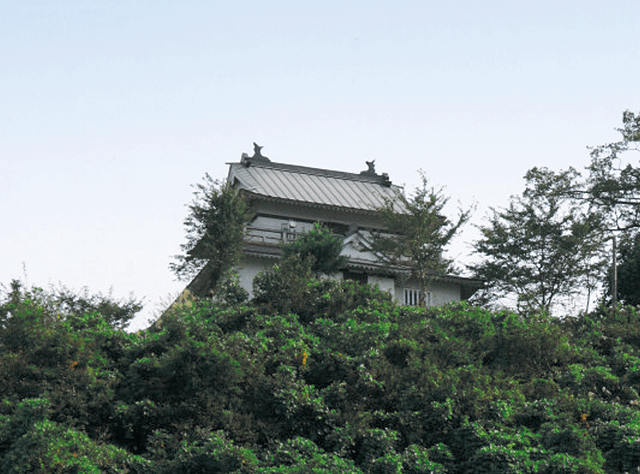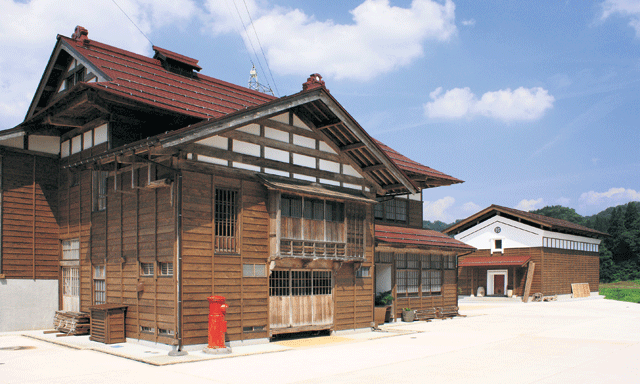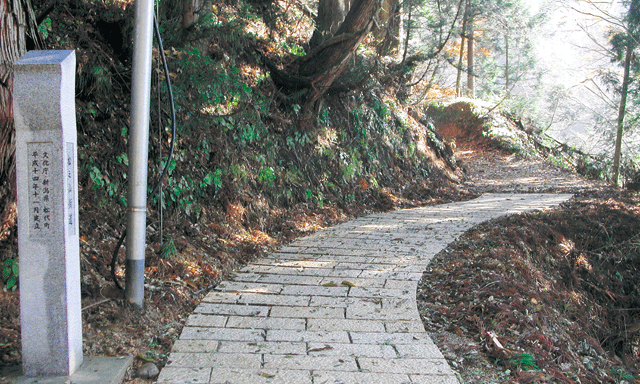
Simple, nostalgic landscapes.
The beautiful nature and unchanged scenery have led to it being selected as one of Japan’s 100 Best Hamlets.
The rice terraces, spreading out in a series of steps down the side of the mountain, are not only used for growing rice but help prevent flooding, acting as tiny dams to stabilize the mountainside, and are home to lots of different creatures.
This simple, unpretentious, and nostalgic landscape attracts more and more photographer and tourists every year.
You can download a PDF map (in Japanese only) of the Matsudai rice terraces from the Tokamachi Tourist Association website.

The beech has been chosen as the official tree of Matsudai.
Nature is found in every part of Matsudai, and the 1.6 km-long Yakushi Walking Route near Shibatouge Unkai is the perfect place to enjoy communing with the forest, surrounded by beech trees.
The “Bijinbayashi” (Forest of Beauties) about 25 minutes by road from Shibatouge Unkai is a famous tourist site popular with photographers.

The home of the Echigo-Tsumari Art Triennale, showcasing art born of the land.
A museum of rural life and art that offers visitors the chance to learn about farming villages and their natural setting.
More than 40 works are displayed inside and outside the Nohbutai.
These works, based around local history, customs, people, and nature, allow visitors to experience local culture with all five senses.
Stroll through art and the rural landscape, seeing how they change throughout the seasons.

About 10 minutes by road from Shibatouge Unkai.
As the name suggests, this popular ski area is perfect for families as well as for beginners or intermediate level skiers to practice on.
With an average gradient of just 13 degrees, and half the runs being beginner level, even first-timers can enjoy skiing without worry.
The slopes face north, so can offer plenty of soft powder as well.
It’s the perfect place not only for families, but as a practice course for beginning and intermediate skiers.

A subsidiary castle of Uesugi Kenshin’s Kasugayama Castle.
This castle was used by the warlord Uesugi Kenshin as a subsidiary castle of Kasugayama Castle. The current structure, the keep with a lookout area at the top, was reconstructed in 1981.
From here, 384 m above sea level, you can look out over the streetscapes of Matsudai and over as far as the mountains of Uonuma.
The “Nottore! Matsudai Castle” snow race is a popular event held here every winter.

Displays artifacts from Jomon period sites and old folk tools and equipment.
Housed in an old gabled farmhouse made of keyaki (zelkova) wood, and established around 1935.
The museum exhibits artifacts from Jomon period sites, old folk tools and equipment, and a huge fossil Calyptogena (giant white clam) from 4 million years ago.

The Matsunoyama Road was constructed by the warlord Uesugi Kenshin (1530-1578) as a military route to march troops to the Kanto region. It went through what was then Matsudaimachi, and links what is now Inada in Joetsu City with Shiozawa, in Minami-Uonuma City. As the post station town of Matsudai-juku, the Matsudai region flourished as a transport hub.
Part of the mountain road from Sugakari to Inubuse, up to the Yakushi Pass, has been selected by the Agency for Cultural Affairs as one of Japan’s Hundred Historical Roads.